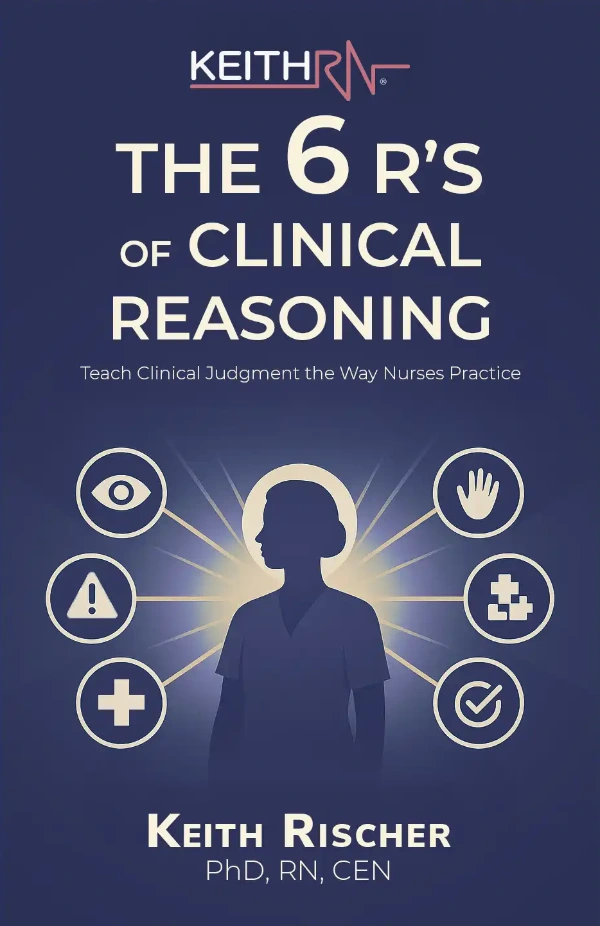I recently received an email from a nursing student who had just graduated, passed the NCLEX® and was now in orientation with her first position on a med/surg unit at a local community hospital.
She shared her struggle to transition to the “new normal” of real-world clinical practice:
“I am terrible at time management. I want to take my time with the patients but this has to stop if I am going to do my job. Maybe floor nursing is not for me. I love taking care of people but the pace is definitely a challenge.
I still am terrified to be working alone (which may happen in the next few weeks). Sometimes the nurses have up to 7 patients and I can’t even imagine that. Praying for confidence and speed without compromising care (I don’t know how that happens).”
Her experience is not unusual, but typical for many new nurses. Fear is the most prevalent emotion that most graduate nurses experience when they contemplate the reality of being an autonomous professional nurse in practice.
Based on my conversations with new nurses in practice, the following fears of new nurses are typical:
- Fear that they don’t have what it takes.
- Fear that they may hurt or even kill their patients.
- Fear that they might miss something.
- In addition to fear, new nurses admit to being unsure of themselves, uncomfortable, and nervous once they are off orientation and are now on their own for the first time.
3 Part Blog & Video Series!
This current blog is part of a special three part series titled “How to Strengthen Student Transition to Real-World Clinical Practice” with a video embedded in my next 3 blogs.
In the video below I share in additional detail what is needed to transform nursing education as well as essential content areas that each student must know and understand deeply to strengthen transition to clinical practice.
Limitations of Nursing Education
The struggle of this new nurse as well as many students who enter practice after graduation represent the limitations within the current model of nursing education to prepare students for clinical practice that cannot be realistically remedied while in nursing school.
The most obvious is the inability to consistently give students multiple patient assignments that require them to priority set and manage their time with 3-4 or more patients. Most students have one and sometimes two patients at the most in nursing clinical.
But there are things that nursing education can do differently to strengthen student transition to real world clinical practice. I would like to share not only my observations but those of the Carnegie Foundation led by Patricia Benner in the book Educating Nurses: A Call for Radical Transformation.
Transformation Needed to Facilitate Student Transition
It is my observation that there is a direct relationship between the lack of transformation that continues to persist at varying levels in academia and the ability of a program to prepare students to transition successfully to clinical practice. This is my observation and equation:
TRANSFORMATION = successful student TRANSITION.
The findings of the Carnegie foundation made it clear the nursing education is in need of radical transformation in order to improve and strengthen student learning. This includes decreasing content saturation to provide DEEP learning of what content is MOST important.
The following essential shifts of integration were the essence of the recommendations from Educating Nurses. Reflect and determine the if these aspects of transformational change are reflected in your program. If not or still a work in progress recognize the implications to your students and their ability to transition successfully to clinical practice.
Shift #1: Contextualize Your Content
Everything that taught in the classroom must have a hook of contextualization to the bedside so students can see why it is relevant. Textbook content with slide presentations with little application does not prepare students to use this knowledge and prepare them for clinical practice.
Shift #2: Integrate Classroom & Clinical Teaching
Clinical realities need to be brought to the classroom. In most programs classroom theory is distinct and separate from clinical education. This fragmentation does not prepare students for a PRACTICE based profession.
Consistently bringing application and clinical realities through case studies or other active learning in the classroom is an effective strategy to bridge this current classroom and clinical divide.
Shift #3: Emphasize Clinical Reasoning
I have written extensively in prior blogs on the importance of clinical reasoning as nurse thinking. But for a quick review, I will share the essence of this definition from the works of Patricia Benner found in Educating Nurses and Clinical Wisdom and Nursing Interventions.
Clinical reasoning is the ability of the nurse to:
- THINK IN ACTION and REASON as a situation CHANGES over time
- Capture and UNDERSTAND significance of clinical TRENDS
- Filter clinical data to recognize what is MOST and least important (RELEVANT)
- Grasp the essence of current clinical situation
- IDENTIFY if actual problem is present
Content that Must Be DEEPLY Understood
In addition to implementing needed transformational change, the following content areas must be DEEPLY understood so students can use and apply this knowledge in the clinical setting:
- Anatomy and Physiology (A&P) with an emphasis of understanding disease processes as well as the mechanism of action of medications administered
- Pharmacology with an emphasis of students who can state in their OWN words the mechanism of action and the relationship of the mechanism of action to essential nursing assessments.
- Fluids and Electrolytes (F&E) with an emphasis of lab values and understanding patho so students understand WHY abnormal labs are present with the primary problem of the patient. “Lab Planning” is a an approach that experienced nurses use to create a plan of care around a relevant abnormal lab, See my past blog on “Lab Planning” to see how to incorporate this principle in your content or practice!
In Closing
Though students will always have some degree of difficulty transitioning to clinical practice because of their inexperience, educators have a responsibility to not only prepare them for the NCLEX®, but the nuances of real-world practice.
Do what is needed to be part of the needed change in nursing education and remember that if students are not well prepared for real-world clinical practice, this not only affects the student but also their patients when a nurse fails to rescue when the status of a patient changes.
Every student also needs a mentor to guide and role model what it means to be a nurse. Live out this needed example and provide resources to help every student get off to a strong start as they graduate from your program!
What do you think?
If you are a student or new nurse, what are your greatest fears about independent clinical practice?
Educators…how can student transition to clinical practice be strengthened in nursing education?
Comment below and let the conversation begin!
References
Benner, P., Sutphen, M., Leonard, V., & Day, L. (2010). Educating nurses: A call for radical transformation. San Francisco, CA: Jossey-Bass.
Benner, P., Hooper-Kyriakidis, P., & Stannard, D. (2011). Clinical wisdom and interventions in acute and critical care: A thinking-in-action approach. (2nd ed.). New York, NY: Springer.
Keith Rischer – PhD, RN, CEN
As a nurse with over 35 years of experience who remained in practice as an educator, I’ve witnessed the gap between how nursing is taught and how it is practiced, and I decided to do something about it! Read more…
The Ultimate Solution to Develop Clinical Judgment Skills
KeithRN’s Think Like a Nurse Membership
Access exclusive active learning resources for faculty and students, including KeithRN Case Studies, making it your go-to resource.




